Romani Realities
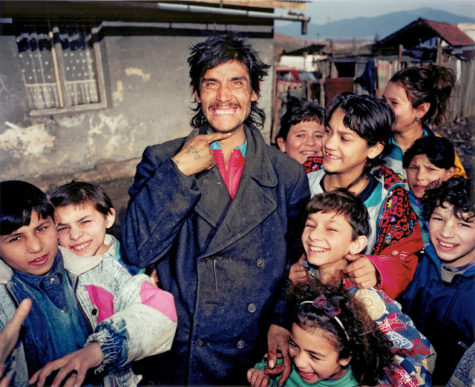
It is easy to find images of the gypsy portrayed in vibrant colors, airy skirts and head scarves, but this is a personification of the abstract. This post serves as a grim reminder of what is all too often the harsh reality of Romani life in today’s world.
Approximately one million Roma lived in Europe before the second World War. The largest community which totaled about 300,000, was actually in Romania. This population was known for leading a nomadic life, and their employment included trading, wood and other crafting, merchants, laborers, and of course, musicians. Today, there are “officially” 620,000 Roma living in Romania; however, this is a controversial estimate, as leaders indicate their may be between 1 to 3 million in population. It is believed that the controversy in numbers exist from discrimination, as the gypsies often do not acknowledge their actual ethnicity.
The Roma have existed through a long and sometimes violent history which has kept this population as largely misunderstood. They have been characterized as social outcasts and through the existence of extreme poverty, they have been known as thieves and beggars. This has forced the majority of Roma Gypsies to live in very harsh conditions – has affected them mentally, spiritually, physically and economically – for generations. The reality for these folks today, particularly in northern Romania, is that they are living in make-shift houses constructed of old boards and plywood, and there are apparently political and cultural clashing and extenuating ramifications for which there has been no solution.
Romania is not the only country which hold disdain for this population, as the gypsy culture is steeped ‘twixt and ‘tween all of Europe, (Great Britain, Italy, Spain, France are currently “problem areas”), Russia and pretty much around the world.
According to Spain’s Guardia, no less than 95% of thievery crime is committed by gypsy children who are under 14 years of age, and due to this minor status, they are forced to release them back into the community, at large.
As depicted in the photos below, dailymail.uk gives the story of a mayor building a wall around an area where the gypsies live, along with many pictures of current living conditions in which the Roma exist today.
Craica has no sewerage, indoor water or power supplies, and ramshackle huts lie between heaps of rubbish. Some residents admit to drawing electricity cables from nearby blocks. Even so, there are many who want to stay and are resisting being moved.
‘I lived here for the last 20 years. My woman died here and I want to also die here,’ said 59-year-old Trandafir Varga, one of the oldest residents and a community leader, surrounded by younger Roma who nodded their head in approval.
‘There, we would be isolated. Here, we have horses, pigs,’ Varga said. ‘It’s like a concentration camp there at Cuprom, we aren’t going there. We want to stay outdoors and cannot stay in blocks.’
According to Catalin Chereches, this was part of a grand scheme to improve the lives of deeply impoverished families in the northern Romanian town who have been struggling to survive for generations.
About 980 Roma lived in Craica before the rehousing started in June. Some 100 families have so far been relocated to three administrative buildings of the former plant.
However, human rights groups claim that the 33-year-old Vienna-educated economist is racist. They have accused him of imprisoning the population in a ghetto and making their plight even worse.
‘This is completely wrong. We need to find solutions that integrate, not segregate,’ said Dezideriu Gergely of the European Roma Rights Centre. ‘There is a danger because dealing in such a manner with Roma issues only triggers the resentment and prejudices that already exist.’
Craica is a sharp contrast to the rest of the city, which has a well-preserved medieval center generously dotted with gothic churches, cafes and artisan shops.
Some Roma from Craica work as garbage collectors for the municipality and some at a furniture plant. Most are jobless, seasonal laborers or eke out a living from selling scrap metal.
Living conditions are so grim that many of those who have been moved say they are thankful to Mr Chereches, even though their new housing at the Cuprom offices leaves much to be desired, with only two bathrooms on each floor of several apartments.
‘I lived in a single room with six children and my wife at Craica,’ said 40-year-old Sandu, a seasonal construction worker rehoused to a small apartment with wooden furniture and an LCD television, bought with his own money. ‘My wife is jobless. I thank the mayor for giving me this place.’
Photographs shot in the heart of the slum – and at a dilapidated communist-era blocks where some of the families have been rehoused – show scenes of appalling poverty with families struggling to survive in temperatures which can plummet to -26C.
The concrete wall measures 1.8 metres high – built on an embankment, it appears much higher when you are inside the slum.
It is constructed on one side of a Roma neighborhood of crumbling apartment blocks, but because it links with other buildings and walls, it encloses the area with few access points. Mr Chereches says it was built to keep children safe from a main road.
He claims living conditions have improved by moving families away from a slum where naked children play in the dust with stray dogs and cats. But it still keeps Roma separate from other people and lacks space and bathrooms.
‘It’s clear, conditions there are not similar to the Hilton or Marriott. But this doesn’t mean this is not a step forward towards their civilization and emancipation,’ Mr Chereche explained in his tidy and modest office.
Faced with such conditions, it is hardly surprising that many Romanians say they would like to move to Britain in January 2014 when they gain the right to live and work unrestricted under European ‘freedom of movement’ rules.
Sources: Vermont Deadline and Daily Mail
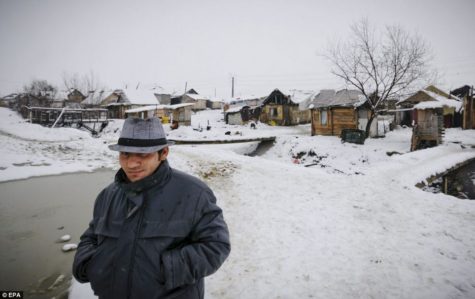
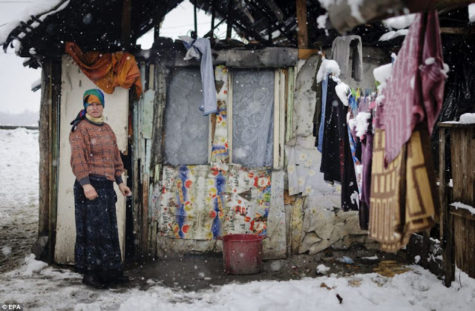
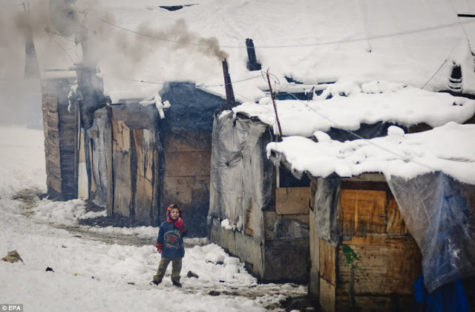
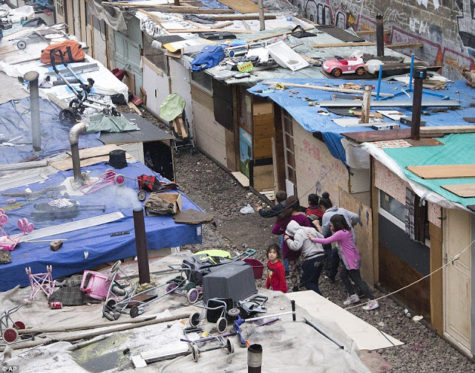
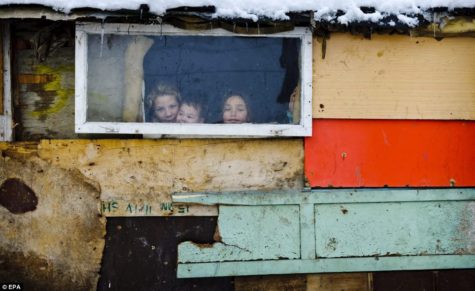
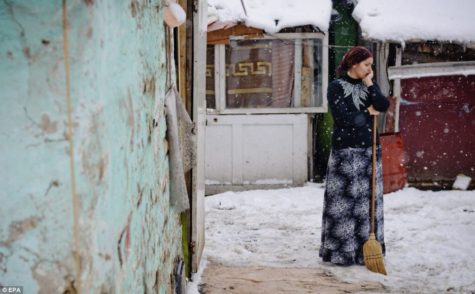
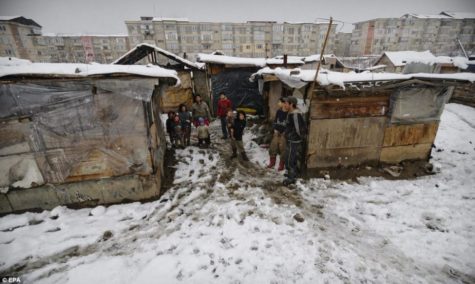
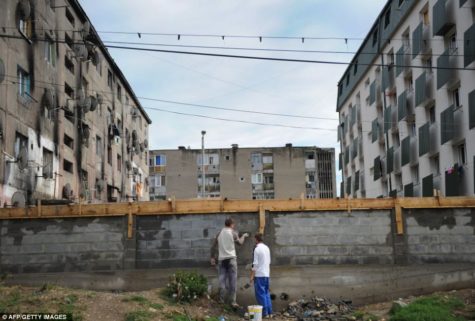
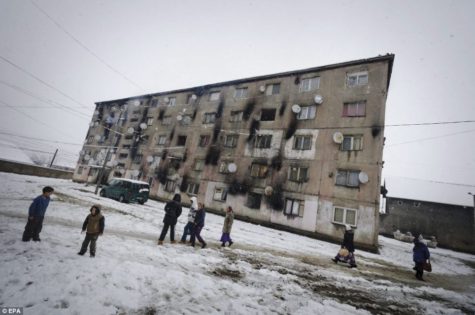
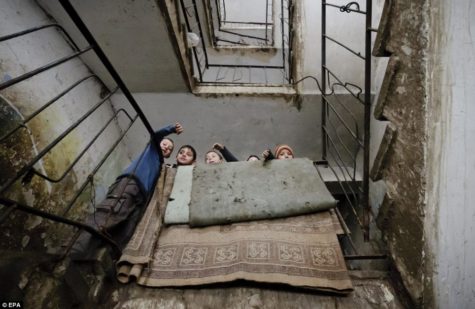
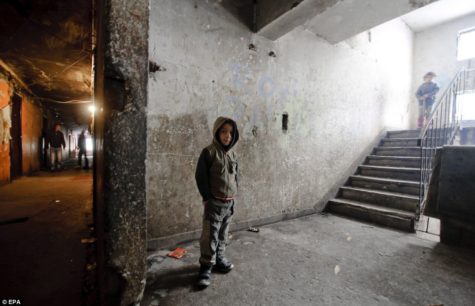



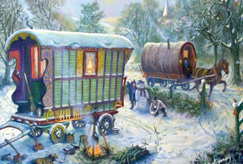
Leave a Reply